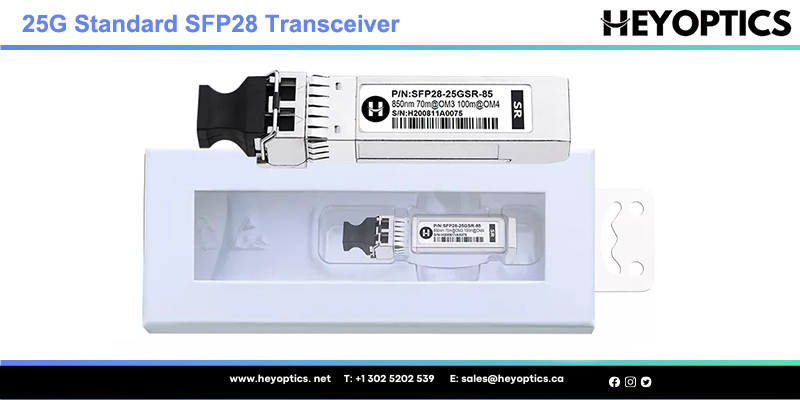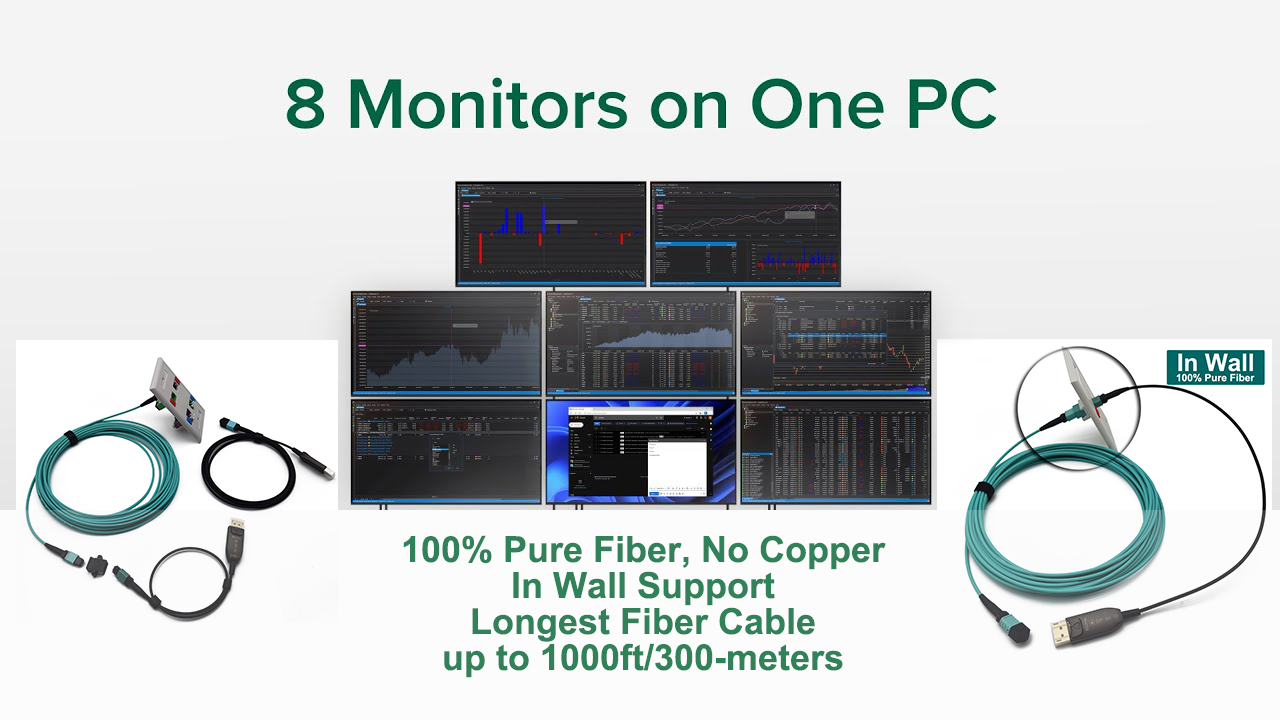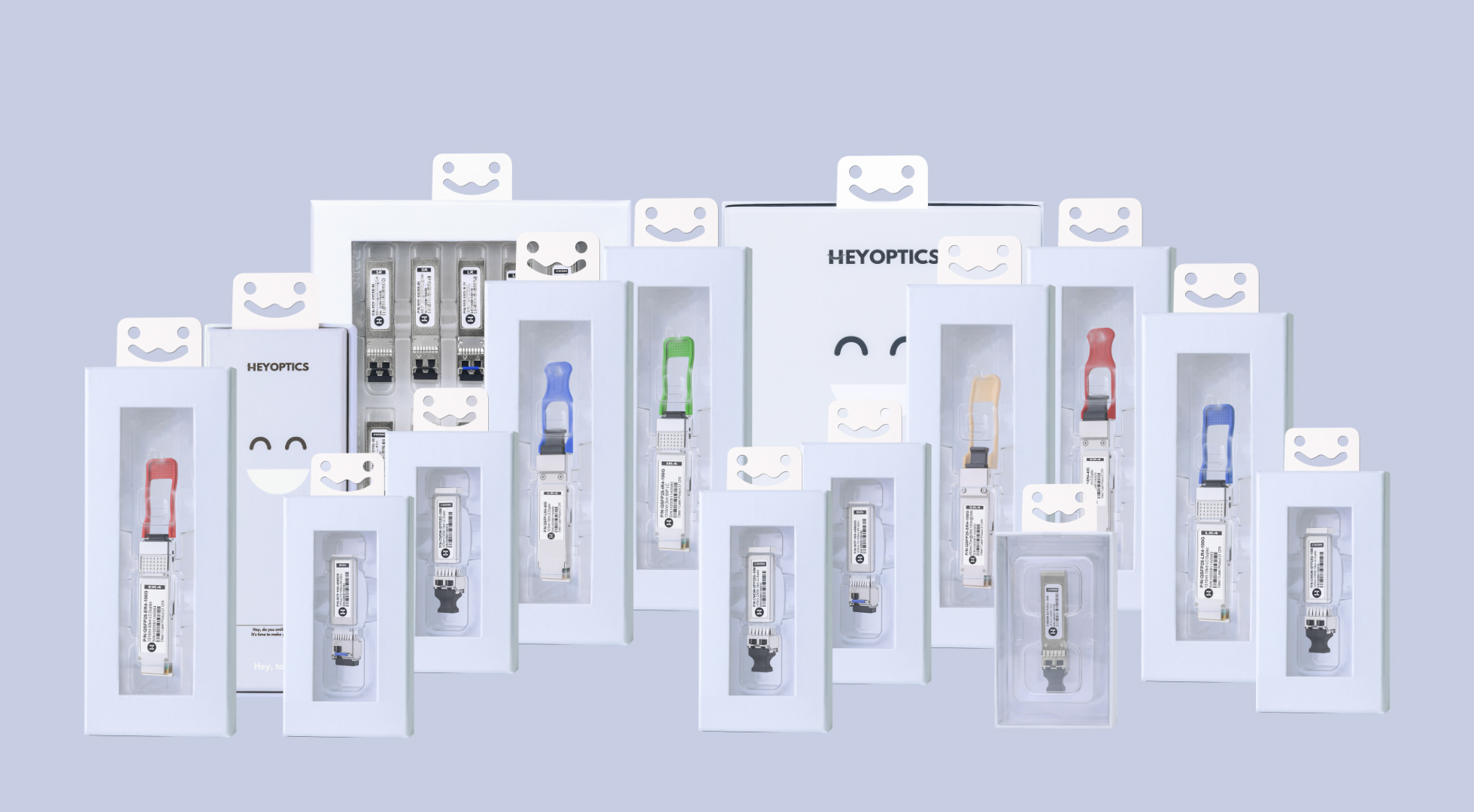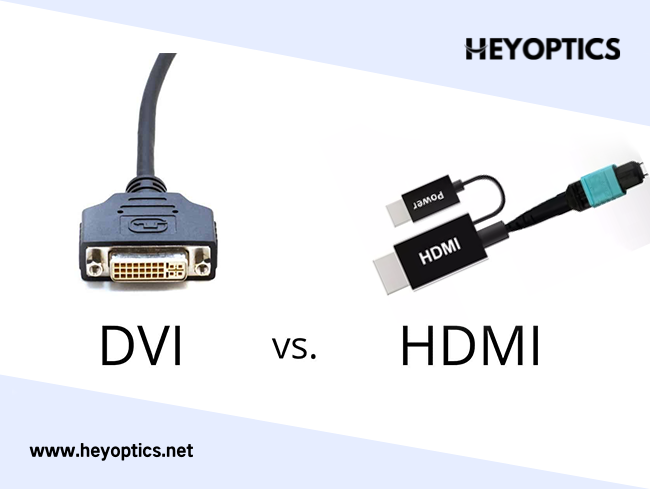SFP28 25G transceiver and SFP28 25G DAC cable
With the massive increase in demand for huge bandwidth from private and public cloud data centers and telco's, and thanks to the latest advancements in 25G Ethernet speed technology, ICT researchers and developers are pushing 25 Gigabit Ethernet to meet the needs of the Internet Users have higher requirements for bandwidth. In fact, 25GbE ports are growing rapidly among data center server access ports. This article will introduce 25GbE Ethernet and 25G SFP28 transceivers.
What is 25G Ethernet?
25G is a proposed standard for Ethernet connectivity that could benefit cloud and enterprise data center environments. In June 2014, the IEEE explored the standardization of 25G Ethernet. Subsequently, the standards organization has formed an 802.3by 25G Ethernet study group. They focus on market opportunities and requirements for a single-lane 25G Ethernet speed for server interconnects. Ethernet 25G is an emerging network technology, which is mainly used for the next generation of data center server. Ethernet 25G can provide a 25G media access control (MAC) that matches the single-lane 25G physical layer (PHY) technology. In web-scale data centers, 25G could provide an efficient server to increase top-of-rack (TOR) speed. That 25G technology can save cloud providers and enterprise data centers capital and operating expense.
Why 25G Ethernet?
- Ideal for the Cloud
Cloud computing is the most biggest attractions for Ethernet 25G. Cloud providers are looking forward to reducing cost and improving density, but 10G is no longer the need of server speeds. Under this condition, 10G requires more switches in the rack, so it needs higher cost. With the emergence of 25G technology, the IEEE has defined 100G Ethernet based on four lanes each at 25G. With the success of 100G Ethernet in data center networks for inter-switch links, Ethernet 25G has proven to be a reliable and cost effective technology.
- Availability to the Server, Switch and Storage Infrastructure
Since the 25G Ethernet Consortium was formed in 2014, multiple suppliers have released silicon and system products that support the standard. Major server vendors offer 25G, 50G and 100G Ethernet adapters, while a broad range of switch vendors support 25G, 50G and 100G Ethernet speeds. In addition, the latest merchant silicon switches deliver up to 32 ports of 100G with single lane SerDes architectures with 128 lanes of 25G, making 25G a logical speed choice for migration of next generation server and storage. Therefore, there are 25G Ethernet solutions from all of the major switch and server vendors. As more and more of the server, switch and storage infrastructure converts to 25G, you will be able to recognize the performance and efficiency of the faster network speeds.
- More Performance Improvement of 25G
25G solutions provide 2.5x more bandwidth, but they are not significantly more expensive than 10G Ethernet solutions. Furthermore, they are fully backwards compatible when connected to 10G equipment. When you upgrade data center network to 25G, you can refresh your network with 25G capabilities instead of upgrading the whole system. Compared with 40G solutions, the underlying technology for 40G Ethernet is simply four lanes at 10G speed. It does not offer the advantages of cost, power consumption and server rack density, which enable widespread speed transition. All in all, 25G Ethernet provides lower costs and power requirements, which can enable network bandwidth to be cost-effectively and support the next-generation server and storage solutions in cloud and web-scale data center environments.
What is 25G SFP28 Transceiver
SFP28 is the dominant form factor for the 25G transceiver. It is upgrade standard relies on the 10G SFP+ (Small Form Factor Pluggable) standard for mechanical specifications. The SFP28 transceiver supports the electrical specifications that operate at 10.312Gbps to one 28Gbps lane that operates at 25Gbps+ error correction. The SFP28 form is the third generation of the SFP interconnect systems designed for 25G performance per the IEEE 802.3by specification.
Types of SFP28 25G Transceiver and Cables
25G SFP SR transceiver is a multimode 25G transceiver that operates over a pair of multi-mode fibers (MMF), using a wavelength of 850nm. It provides an ideal solution for data center applications that require up 100 meters over OM4 fiber or 70 meters over OM3 fiber interconnect.

SFP28 25G LR Transceiver
25G SFP LR transceiver is a single-mode transceiver. It is SFP28 module for duplex optical data communications supports 25G Ethernet. It is with the SFP+ 20-pin connector to allow hot plug capability. Digital diagnostic functions are available via an I2C. 25G SFP28 LR is designed for single-mode fiber and operates at a nominal wavelength of 1310nm.
SFP28 25G ER Transceiver
25G SFP ER transceiver is a single-mode extended reach transceiver. This SFP28 module is designed for duplex optical data communications to support 25Gb/s Ethernet with CDR engaged, while, 10G ethernet optical data communication can be supported when CDR is bypassed. It is with the SFP+ 20-pin connector to allow hot plug capability. Digital diagnostic functions are available via an I2C. This module is designed for single-mode fiber and operates at a nominal wavelength from 1295nm to 1310nm. The transmitter section uses a 1310nm multiple quantum well DFB laser and is a class 1 laser compliant according to International Safety Standard IEC 60825.
25G SFP CWDM transceiver is a single-mode CWDM transceiver. It is SFP28 module for duplex optical data communications support up to 25.78Gb/s. It is with the SFP+ 20-pin connector to allow hot plug capability. Digital diagnostic functions are available via an I2C. It has a built-in clock and data recovery (CDR). This module is designed for single-mode fiber and operates at a nominal wavelength of CWDM (1271~1331nm).
25G SFP BiDi transceiver is a single-mode Bidirectional transceiver. It is SFP28 module for duplex optical data communications supports up to 25.78Gb/s. It is with the SFP+ 20-pin connector to allow hot plug capability. Digital diagnostic functions are available via an I2C. It has a built-in clock and data recovery (CDR). This module is designed for simplex fiber and operates at a nominal wavelength of 1270 / 1330nm.
25G SFP28 Cable
25G SFP28 DAC is a 25GBASE-CR direct attach copper cable for data center environment. It provides a high speed, cost-effective alternatives to fiber optics in 25GbE Ethernet applications. The cables are compliant SFF-8402 SFP28 standard. The 25G SFP cable is available in lengths up to 5m (16.4 ft) for passive DAC. Compared with SFP28 transceiver, 25G SFP DAC allows the customers to deploy the copper cabling with a far less budget.
25G SFP28 AOC is a 25GBASE-AOC SFP28 Active Optical Cables (AOC) taht designed for use in 25GbE Ethernet systems. The SFP28 AOC offers high port density and configurability, and reach much longer lengths than passive copper cables. It offers a cost-effective and power-efficient cabling solution for high-speed data applications.



